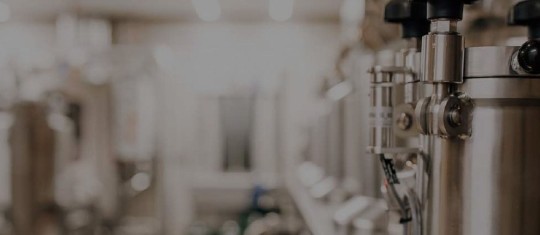Drinking beer is better with good company. Beer bitterness as well. That's what German scientists found out in a study they published in 2017 in the journal of Brewing Science. Clearly, the study is not about the colleague, the boss, the neighbor or the girlfriend, i.e. social contacts that make every beer drinking an event.
Rather, it focuses on “auxiliary bitter compounds” that accompany the iso-alpha acids in beer. In fact, the authors examined their significance for the quality of beer bitterness. Auxiliary bitter compounds include all bitter compounds that are not iso-alpha acids, i.e. non-isomerized alpha acids, beta acids, polyphenols such as xanthohumol derivatives, and many more.
It is not easy to determine the amount of auxiliary bitter compounds in a beer. The IBU value, for example, measures bitter substances using spectrophotometry (ex. EBC 9.8 method) at a wavelength of 275 nanometers. Everything that is absorbed at this wavelength in the beer belongs to a large group of bitter compounds, although not all of these compounds also taste bitter in beer. Thus, a large variety of chemical substances is measured, which we have not identified entirely, nor do we know their sensory expression. Fortunately, the HPLC method (high-performance liquid chromatography or EBC 9.47) can be used to find out the many different iso-alpha acids concentration in beer.
By combining the HPLC method with spectrophotometry, it is however possible to derive at least an index for the quantity of auxiliary bitter compounds. This is done by calculating the ratio of IBU to iso-alpha acid content. The values are usually between 1 and 2.5, where 1 means that no accompanying bitter substances have been measured and only iso-alpha acid is present. The higher the value, the more auxiliary bitter compounds are present.
In the study, the quality and harmony of the bitterness in the beer were tasted, scaled and statistically evaluated to obtain reliable sensory data. The results show that both the quality and the harmony yield higher values when there are many auxiliary bitter compounds in addition to the iso-alpha acid in the beer. It has not yet been possible to specify which individual substances provide the best company. However, this much is certain: in their entirety, the auxiliary bitter compounds round off beer flavor and bitterness.
Brewers may thus want to pay attention to the composition of the hops in order to create a delicious bitterness. The concentration of polyphenols and beta acids in relation to the alpha acid content is decisive here. According to the study, a viable indicator is a good ratio of beta-acid to alpha-acid content such as we find in traditional landrace varieties. It would also be smart to apply late hop additions so that not all alpha acids isomerize but are added to the beer as an auxiliary bittering compound. Of course, this is even more true for dry hopping, where also humulinones (oxidized alpha acids) are introduced to beer and contribute a pleasant sensory impression.
A pleasant, balanced bitter quality is particularly important in lagers, where it is mainly the hops and malt (not the yeast) that provide the majority of the flavor impression. This shows with hop-forward beer styles such as pilsner or some light bock beer interpretations: if all the bitter units came from iso-alpha acid alone, the sensory impression would be very one-dimensional. In the top-fermented range, the same applies: all beer styles where bitterness is important, for example West Coast IPAs, gain depth from auxiliary bitter compounds.
The study to this post:
A. Forster, A. Gahr and F. Schüll: What are Auxiliary Bitter Compounds in Hops and how do they Affect the Quality of Bitterness in Beer? BrewingScience, 70 (November/December 2017), pp. 203-209 (DOI: 10.23763/BRSC17-21forster)


